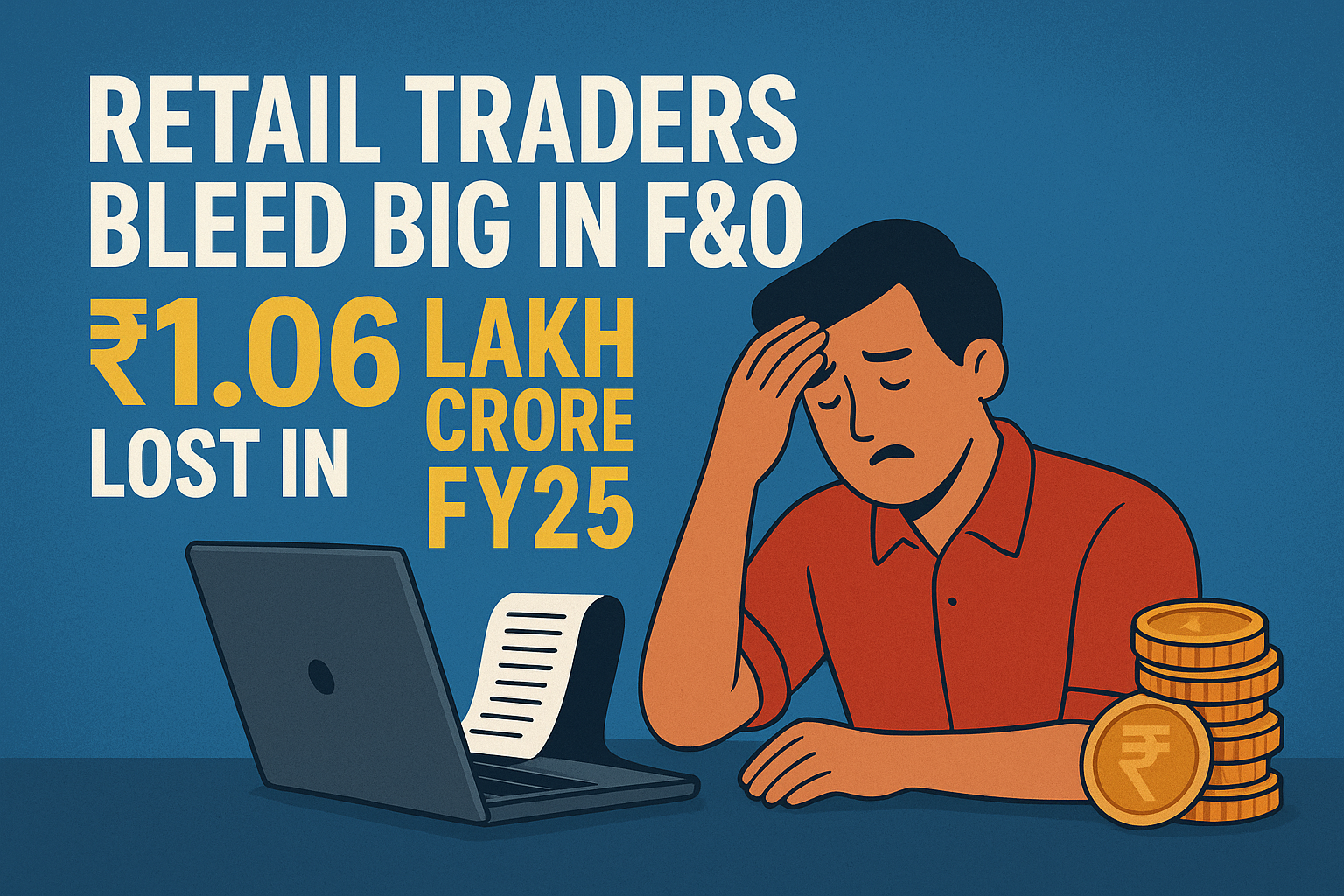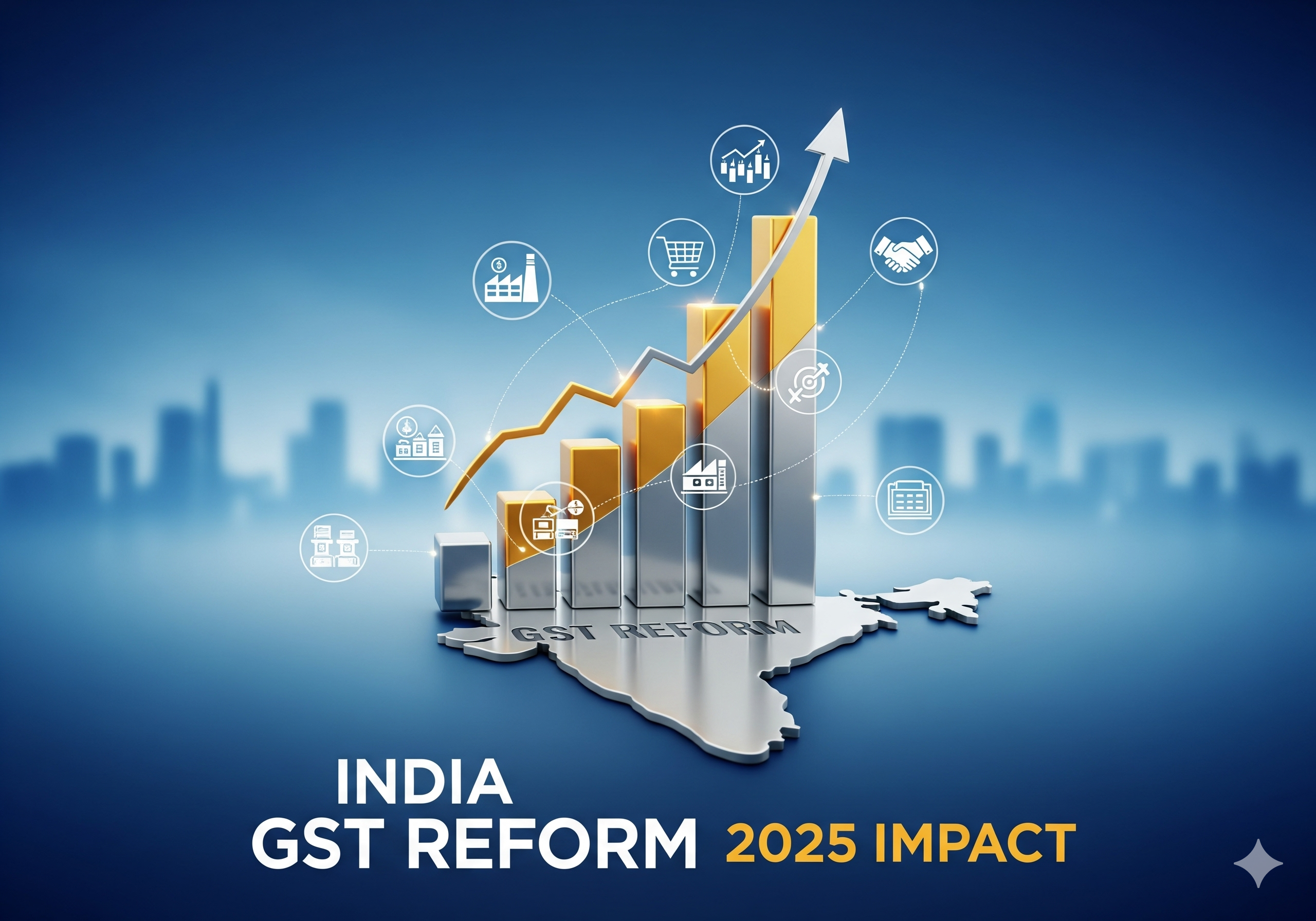
If you’re someone who’s ever looked at a receipt and sighed at the GST percentage slapped on your purchase, here’s some news that could put a smile on your face. India has just unveiled GST 2.0, and it’s being called the biggest tax reform since GST was first introduced in 2017.
But what exactly is the GST 2.0 India reform? Why is everyone—from middle-class families to big corporates—buzzing about it? And most importantly, how does it impact your daily life? Let’s break it down in plain, simple language.
What is GST 2.0 and Why Now?
The 56th GST Council meeting, chaired by Finance Minister Nirmala Sitharaman, approved a sweeping reform of India’s indirect tax system. Over the years, GST had become too complicated, with four different slabs—5%, 12%, 18%, and 28%—plus multiple exemptions.
This created confusion for businesses, endless disputes over classifications, and a compliance headache for small traders. Consumers too often felt the pinch, with everyday items taxed at rates that didn’t make sense.
GST 2.0 is designed to simplify, rationalize, and humanize the tax system—making it fairer for families and easier for businesses.
Key Highlights of GST 2.0 India Reform
1. From Four Slabs to Two (Plus a Luxury Bracket)
- Old system: 5%, 12%, 18%, 28%
- New system: 5% (essentials), 18% (majority of goods and services), and 40% (sin & luxury items).
This means your everyday items like toothpaste, biscuits, small cars, or even a new washing machine will likely get cheaper. On the flip side, things like luxury SUVs, yachts, cigarettes, and sugary drinks will cost more.
👉 Why it matters: Lower taxes = higher affordability = more disposable income.
2. Apparel & Footwear Get Relief
Earlier, only clothes and footwear priced up to ₹1,000 enjoyed 5% GST. Now, the limit has been raised to ₹2,500, giving relief to millions of families and boosting the textile sector.
3. Insurance Becomes More Affordable
Health and life insurance premiums, which were taxed at 18%, could now drop to just 5%. For middle-class households juggling EMIs and rising medical costs, this is a huge win.
4. Faster Refunds for Exporters
Exporters in sectors like textiles, pharmaceuticals, chemicals, and fertilizers will now get GST refunds within 7 days. This helps businesses free up working capital and encourages global competitiveness.
5. MSME-Friendly Compliance
Small businesses are the backbone of India’s economy. Under GST 2.0, non-risk MSMEs can get GST registration within 3 days. Less paperwork, fewer delays, and more ease of doing business.
6. Farmers & Rural India Get a Boost
Essential farm equipment like tractors, irrigation systems, and fertilizers are now in the lower 5% slab. This reduces input costs and makes farming more sustainable.
7. Festive-Season Timing
The reform kicks in from September 22, 2025 right before Diwali. That means cheaper essentials, consumer goods, and even entry-level cars just when families are preparing for festive purchases.
Translation: This isn’t just an economic decision, it’s also a political masterstroke.
What It Means for You (Middle-Class Focus)?
If you’re wondering whether GST 2.0 is really a good thing for the middle class—the answer is yes.
- Cheaper groceries & essentials: Cooking oil, toothpaste, soaps, biscuits, and snacks are now in the 5% slab.
- Lower cost of living: Electronics like TVs, ACs, fridges, and washing machines will likely drop in price.
- Insurance savings: Families paying health & life premiums get major relief.
- Affordable fashion: Clothes and shoes up to ₹2,500 become pocket-friendly.
Imagine shopping for Diwali, buying gifts, clothes, and maybe even upgrading your TV—your bill will look a lot lighter.
What It Means for Businesses & the Market
For businesses, GST 2.0 is not just about lower rates—it’s about predictability and clarity.
- Simpler compliance: Two slabs mean fewer disputes over “what rate applies where.”
- Faster refunds: Exporters won’t face long delays in cash flow.
- Higher margins: Companies can pass some benefits to consumers while keeping profitability intact.
- Stock market boost: Sectors like FMCG, auto, insurance, renewables, and textiles are expected to see strong momentum.
In fact, analysts are calling GST 2.0 a bull-run trigger for Indian equities
Challenges & Concerns
Of course, it’s not all rosy. Some concerns remain:
- Revenue loss for states: Experts like Amit Mitra estimate a hit of over ₹1 lakh crore in the short term.
- Implementation hiccups: Businesses will need to reclassify items and update ERP systems.
- Luxury sector slowdown: High taxes on premium goods could hurt demand.
Still, the government believes the surge in demand and wider tax base will make up for the losses.
Why GST 2.0 is a Landmark Reform
Finance Minister Nirmala Sitharaman herself called GST 2.0 the “final piece in India’s tax reform puzzle.” It’s aligned with the vision of Aatmanirbhar Bharat, focused on affordability, fairness, and growth.
Think about it:
- Consumers save money → they spend more → businesses grow → jobs increase → government revenue recovers.
That’s a win-win cycle.
How to Prepare (For Businesses & Traders)
If you run a business, here’s your quick checklist:
- Update your accounting and billing systems.
- Reclassify your products as per the new slabs.
- Train your finance team on GST 2.0 compliance.
- Promote savings to attract more customers during festive sales.
| Key Reform | Old System | GST 2.0 Change | Impact |
|---|---|---|---|
| Tax Slabs | 4 slabs – 5%, 12%, 18%, 28% | 2 slabs – 5% (essentials), 18% (most goods/services) + 40% (luxury & sin goods) | Cheaper essentials & consumer goods; costly luxury items |
| Apparel & Footwear | 5% only up to ₹1,000 | 5% up to ₹2,500 | Affordable clothing & footwear for families |
| Insurance | 18% GST | 5% GST | Lower premiums for health & life insurance |
| Export Refunds | Delays in refund processing | Refunds within 7 days | Boost to exporters’ cash flow & competitiveness |
| MSMEs | Slower, paperwork-heavy registration | Non-risk MSMEs get GST registration in 3 days | Easier compliance, business growth |
| Farming & Rural | Higher costs on equipment/fertilizers | Farm essentials at 5% GST | Relief for farmers, sustainable agriculture |
| Festive Timing | No link with seasons | Effective Sept 22, 2025 (before Diwali) | Families benefit during festive shopping |
| Stock Market Impact | Mixed growth across sectors | Boost to FMCG, auto, insurance, textiles | Market optimism & consumption push |
Final Thoughts
The GST 2.0 India reform isn’t just a tax tweak—it’s a massive reset button for India’s economy. For families, it means cheaper essentials and a lighter financial burden. For businesses, it means smoother compliance and bigger growth opportunities. And for the nation, it could trigger a fresh wave of consumption and investment.
So, the next time you shop for Diwali or pay your insurance premium, remember—you’re already experiencing the impact of GST 2.0.




